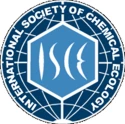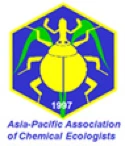
Overview
Journal of Chemical Ecology is dedicated to an ecological understanding of the origin, function, and significance of natural chemicals that mediate organism interactions.
- Publishes research and reviews on both biological and chemical aspects of chemical ecology.
- Official journal of the International Society of Chemical Ecology (ISCE), the Asia-Pacific Association of Chemical Ecologists (APACE), and the Latin American Association of Chemical Ecology (ALAEQ).
- Accepts review articles, original research papers, rapid communications, and letters to the editor.
- Emphasizes papers containing both chemical and ecological/behavioral elements.
- Submissions may include substantive observations of interactions in nature, the elucidation of the chemical compounds involved, the mechanisms of their production and reception, and the translation of such basic information into survey and control protocols.
- Applied chemical ecology is welcome as long as the work is based on ecological problems or concerns.
- Editor-in-Chief
-
- Gary W. Felton
- Impact factor
- 2.3 (2022)
- 5 year impact factor
- 2.6 (2022)
- Submission to first decision (median)
- 4 days
- Downloads
- 482,906 (2023)
Societies and partnerships

Latest articles
Journal updates
-
Societies
International Society of Chemical Ecology
Asia-Pacific Association of Chemical Ecologists
Latin American Association of Chemical Ecology
Journal information
- Electronic ISSN
- 1573-1561
- Print ISSN
- 0098-0331
- Abstracted and indexed in
-
- AGRICOLA
- Astrophysics Data System (ADS)
- BFI List
- BIOSIS
- Baidu
- Biological Abstracts
- CAB Abstracts
- CLOCKSS
- CNKI
- CNPIEC
- Chemical Abstracts Service (CAS)
- Chimica
- Current Contents/Agriculture, Biology & Environmental Sciences
- Dimensions
- EBSCO
- EMBiology
- Engineering Village – GEOBASE
- Google Scholar
- Japanese Science and Technology Agency (JST)
- Medline
- Meta
- Naver
- OCLC WorldCat Discovery Service
- Portico
- ProQuest
- SCImago
- SCOPUS
- Science Citation Index Expanded (SCIE)
- TD Net Discovery Service
- UGC-CARE List (India)
- Wanfang
- Zoological Record
- Copyright information
-
© Springer Science+Business Media, LLC, part of Springer Nature








